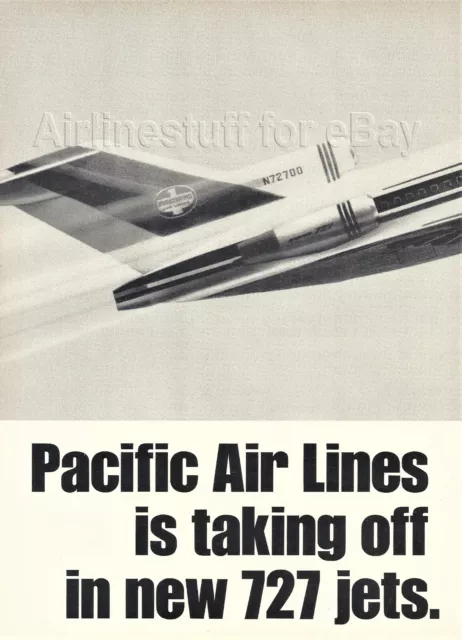1966 PACIFIC Air Lines BOEING 727 2-page AD airways advert WEST COAST BONANZA
$29.99 Buy It Now or Best Offer, FREE Shipping, 30-Day Returns, eBay Money Back Guarantee
Seller: airlinestuff4 ✉️ (14) 100%,
Location: Dallas, Texas, US,
Ships to: WORLDWIDE,
Item: 355571390955
1966 PACIFIC Air Lines BOEING 727 2-page AD airways advert WEST COAST BONANZA. PACIFIC AIR LINES Taking off in new 727 jets. Serving 37 cities in California, Nevada, Oregon. 1966 vintage 2-page print ad VERY GOOD+++ condition, as shown. Buyer satisfaction always guaranteed. NOTE: This is a 2-page ad. Pages are separated, as shown. Each individual page measures approximately 11.0 INCHES by 8.0 INCHES. When pages are placed together, the full ad size is approximately 11.0 INCHES by 16.0 INCHES. Pages are the perfect size to slip into plastic sleeves for display in a 3-ring binder or collector's album. This is an original PACIFIC AIR LINES ad. Not a reproduction. Ad will be wrapped in plastic and securely packaged in cardboard for protection while in transit. I am happy to combine shipping on multiple purchases. If you have any questions, please ask. Pacific Air Lines was a regional airline (then called a "local service" air carrier as defined by the federal Civil Aeronautics Board) on the West Coast of the United States that began scheduled passenger flights in the mid 1940s under the name Southwest Airways. The company linked small cities in California with larger cities such as Los Angeles and San Francisco. Flights later operated to Portland, Oregon, and eventually reached Las Vegas and Reno in Nevada. Founded largely with money from investors from the Hollywood motion picture industry, the airline was noted for innovative safety practices and cost-saving procedures. The name Pacific Air Lines passed into history in 1968 in a merger with Bonanza Air Lines and West Coast Airlines, forming Air West, which then became Hughes Airwest following the acquisition of Air West by Howard Hughes. Southwest Airways era (1941–1958) - Founding and wartime operations: In early 1941 Air Service veteran John Howard "Jack" Connelly and noted Hollywood agent/producer Leland Hayward formed a business partnership that five years later evolved into a scheduled airline. Neither was a stranger to aviation; Connelly was a former test pilot, airplane salesman, Civil Aeronautics Administration instructor pilot, and inspector for the 1930s-era Soviet Union. Hayward was an active private pilot and was on the board of directors of Transcontinental and Western Airlines (TWA). The two men enlisted the support of commercial pilot and photographer John Swope to oversee the training of aviation cadets. Together, they founded a maintenance depot for overhauling training aircraft, a wartime air cargo line, and a military pilot training complex consisting of Thunderbird Field No. 1, Thunderbird Field No. 2, and Falcon Field in Arizona. By the end of World War II, Southwest Airways was the largest training contractor in the United States, and trained more than 20,000 pilots from over 24 countries. Start of scheduled service: After the war, Connelly and Hayward raised USD $2,000,000 from investors including James Stewart and Darryl Zanuck to expand Southwest into the airline business, pending government approval. They were awarded a three-year experimental charter from the Civil Aeronautics Board on May 22, 1946, for their feeder service. Scheduled flights began on December 2, 1946, with war-surplus C-47s, the military version of Douglas DC-3 converted for civil use. The initial route was Los Angeles to San Francisco with stops in Oxnard, Santa Barbara, Santa Maria, San Luis Obispo, Paso Robles, Coalinga, Monterey, Santa Cruz/Watsonville, and San Jose. The north coastal route included Oakland, Vallejo/Napa, Santa Rosa, Ukiah, Fort Bragg, Eureka/Arcata, and Crescent City, while the inland route included Oakland, Sacramento, Marysville/Yuba City, Oroville, Chico, Red Bluff, Redding, and Yreka with Medford, Oregon, added later. By the late 1950s Pacific Air Lines was serving Catalina Airport on Santa Catalina Island off the coast of southern California with flights from Los Angeles (LAX), Long Beach (LGB) and Burbank (BUR, now Bob Hope Airport. In 1960 a Crescent City to Portland, Oregon flight was added. In August 1953 Southwest scheduled flights to 23 airports, all in California except for Medford; in May 1968 Pacific flew to 29 airports. No-frills spirit and quick turnarounds: Connelly, president, and Hayward, board chairman, were the majority owners of the airline, and as such could hold sway concerning how the company would operate. Running on slim operating margins, Southwest Airways was a no-frills airline decades before low-cost carriers became common. The airline speeded ground operations to the point where a DC-3 could load and discharge passengers and begin taxiing for takeoff 90 seconds after coming to a stop (adding six minutes if fuel is needed). To save money, the airline had its own pilots do the refueling instead of paying airport personnel. Ground time was reduced by keeping one engine running while a male purser quickly escorted passengers to and from the plane. Pacific's DC-3s were modified with an 'airstair', a door that doubled as a staircase for passengers. The airstair eliminated waiting for a ground crew to roll a wheeled staircase up to the plane. In August 1953 a daily Southwest DC-3 was scheduled SFO to LAX in 3 hours and 45 minutes with eight stops. Pacific Air Lines era (1958–1968): The airline became Pacific Air Lines on March 6, 1958; the corporate logo was changed from an earth-toned Thunderbird reminiscent of a Navajo sandpainting to a simpler, modern design with bright colors. To prevent the flying public from confusing the newly named Pacific Air Lines for a brand-new airline, company timetables in 1959 said the company was in its "17th year of scheduled service". Like other local-service airlines, Pacific was subsidized; in 1962, its operating "revenues" of $12.1 million included $4.1 million in federal subsidy. Prop and turboprop transition: In 1959 Pacific added the first of 14 secondhand pressurized Martin 4-0-4s. Pacific's first turbine airliner, the Fairchild F-27 (a U.S.-built version of the Dutch-manufactured Fokker F27 Friendship) was added to the fleet. In 1960 a phase-out of the thirteen DC-3s began: the last DC-3 flight was in 1962 and the last Martin 2-0-2s were retired in March 1964. The Martin 4-0-4s and Fairchild F-27s became the workhorses of Pacific's fleet. One F-27 in summer 1964 flew Reno-Lake Tahoe-Sacramento-San Francisco-San Jose-Fresno-Bakersfield-Burbank-Los Angeles-San Diego. It left Reno at 6:00 am and was scheduled into San Diego at 12:10 pm. Pacific's fleet became all-turbine after their last Martin 4-0-4 was retired in April 1967. According to the airline's timetables, flights to Las Vegas started in 1957, to Reno and San Diego in 1962, and to Lake Tahoe in 1964. Portland, Medford, Reno and Las Vegas were Pacific's only stops outside California. On September 13, 1965 Pacific Air Lines announced it would acquire six new Boeing 727-100 jets, leasing two immediately and placing orders for the others to be delivered in early 1968. The jets were ordered during a prosperous time for the airline, but net income for Pacific dropped from $700,337 in 1965 to $150,716, chiefly because the 727 was uneconomical on Pacific's routes. Two were leased to National Airlines. The airline promoted the Boeing 727 in a 1966 print ad: "Pacific Air Lines jets to more California cities any other airline." The ad said Pacific 727s served Fresno, Bakersfield, Monterey, Lake Tahoe, Los Angeles, San Francisco, San Jose, and Santa Barbara. Pacific planned to order Boeing 737-200s, more economical than the 727s, but events overtook the airline and the order was cancelled. Controversial ad campaign: I n 1967 the airline embarked on a controversial advertising campaign, including a full-page ad in the New York Times on April 28, 1967, that highlighted the fear of flying, a subject rarely mentioned by airlines. Pacific had hired award-winning advertising executive and comedian Stan Freberg for the ad campaign, knowing that unconventional ideas were his forté. Under his direction, print advertisements said: Hey there! You with the sweat in your palms. It's about time an airline faced up to something: Most people are scared witless of flying. Deep down inside, every time that big plane lifts off that runway, they wonder if this is it, right? You want to know something, fella? So does the pilot, deep down inside. The copy from another ad said: Hey there, you with the sweat in your palms. Do you wish the pilot would knock off all that jazz about 'That's Crater Lake on the left, ladies and gentlemen,' and tell you instead what the devil that funny noise was you just heard? To complement the ad campaign, flight attendants handed out "survival kits" featuring hot-pink lunch pails containing a small security blanket, a "lucky" rabbit's foot, the best-selling book The Power of Positive Thinking, and a fortune cookie containing the slogan "It could be worse. The pilot could be whistling 'The High and the Mighty'." The attendants were also encouraged to exclaim "We made it! How about that!" upon landing. Freberg had unfulfilled plans to paint a Pacific Boeing 727 to resemble a locomotive, with wheels on the fuselage and a cowcatcher on the nose. Inside the cabin, passengers would have heard a recording of a steam locomotive over the loudspeakers. Matthew E. McCarthy, Pacific's chief executive and biggest shareholder, explained the campaign: "It's basically honest. We spoof the passengers' concern, but at least we admit they have it." Philip H. Dougherty, writing in the Business and Finance section of the May 1 edition of The New York Times, described the advertisements as "rather shocking". Objections to the unorthodox campaign were raised at a May 1967 stockholders meeting, and two Pacific Air Lines executives resigned in the wake of the controversy. Merger Time: When the Boeing 727 jet order was announced by the airline in 1965, it was unforeseen that a change in the business climate was on the horizon and that economic realities would dictate that some of the jets would not fly for Pacific. Stiff competition from rivals such as Pacific Southwest Airlines (PSA) and United Air Lines were factors in Pacific Air Lines joining forces with Bonanza Air Lines and West Coast Airlines in a three-way merger into Air West in 1968. Air West became Hughes Airwest after its acquisition by Howard Hughes in 1970 and merged into Republic Airlines in 1980. Republic was acquired by Northwest Airlines in 1987, and Northwest merged into Delta Air Lines in 2008. At the time of the Air West merger, Pacific's fleet included 11 Fairchild F-27s, five Martin 4-0-4s, and three Boeing 727-100s, one of which was still leased out, but returned to Air West in late 1968. The last of the Martins were not carried forward into the Air West fleet and were disposed of in August 1968. The two cofounders of Southwest Airways died within nine months of each other in 1971. John Connelly was 71, and Leland Hayward was 68.
- Condition: Used
- Condition: VERY GOOD+++ condition, as shown. Buyer satisfaction ALWAYS guaranteed.
- Type: PRINT ADVERTISING
- Airline: Northwest
- Country/Region of Manufacture: United States
PicClick Insights - 1966 PACIFIC Air Lines BOEING 727 2-page AD airways advert WEST COAST BONANZA PicClick Exclusive
- Popularity - 0 watchers, 0.0 new watchers per day, 24 days for sale on eBay. 0 sold, 1 available.
- Best Price -
- Seller - 14+ items sold. 0% negative feedback. Good seller with good positive feedback and good amount of ratings.
People Also Loved PicClick Exclusive

1966 PACIFIC Air Lines BOEING 727-200 PRINT AD airways advert BONANZA WEST COAST
$24.99 Buy It Now 7d 3h
1966 PACIFIC Air Lines BOEING 727 PRINT AD airways advert BONANZA WEST COAST v4
$24.99 Buy It Now 7d 3h
1966 PACIFIC Air Lines BOEING 727 PRINT AD airways advert BONANZA WEST COAST v2
$24.99 Buy It Now 7d 3h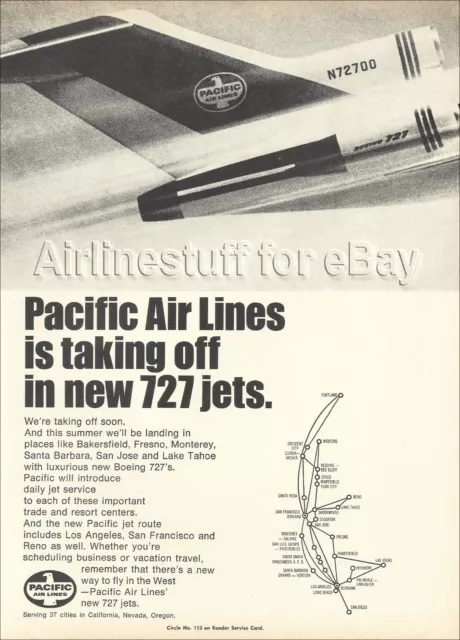
1966 PACIFIC Air Lines BOEING 727 PRINT AD airways advert BONANZA WEST COAST v1
$24.99 Buy It Now 16d 4h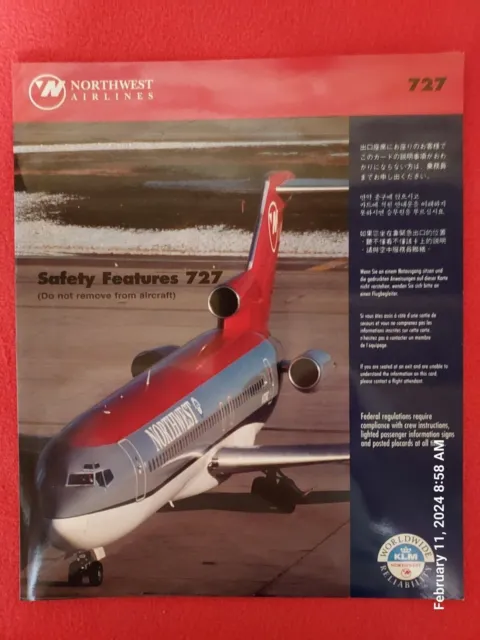
Northwest Airlines Inflight Safety Card. Boeing 727-Dated 04/01 (New-Uncirc.)
$9.00 Buy It Now 4d 23h
 1950 Canadian Pacific Railway Steamship Air Lines Hotels Comfort Print Ad$14.99 Buy It Now or Best Offer
1950 Canadian Pacific Railway Steamship Air Lines Hotels Comfort Print Ad$14.99 Buy It Now or Best Offer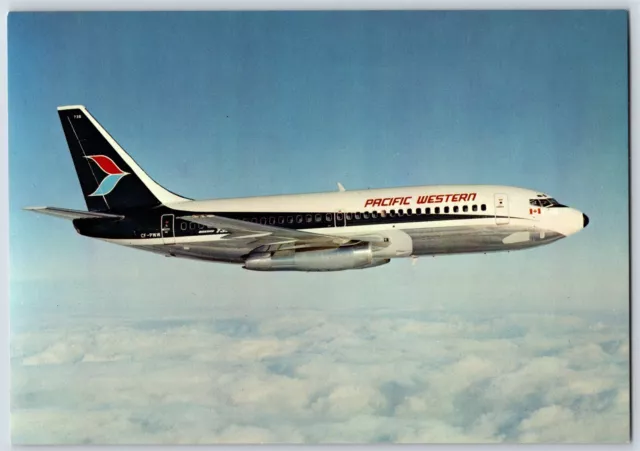
Airplane Postcard Pacific Western Airlines Boeing 737 In Flight CF-PWW BL3
$3.99 Buy It Now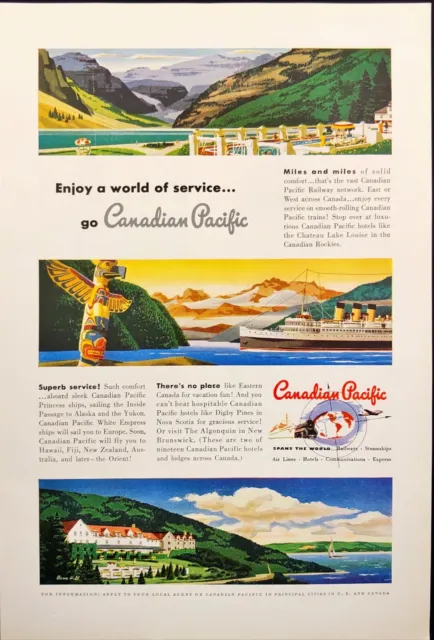
 Canadian Pacific Railways Steamships Air Lines Hotels Vintage Print Ad 1949$11.40 Buy It Now or Best Offer
Canadian Pacific Railways Steamships Air Lines Hotels Vintage Print Ad 1949$11.40 Buy It Now or Best Offer
Canadian Pacific Air Lines Travel Air Sea 1940S Vtg Print Ad 8X11 Wall Art
$12.49$7.49 Buy It Now or Best Offer

